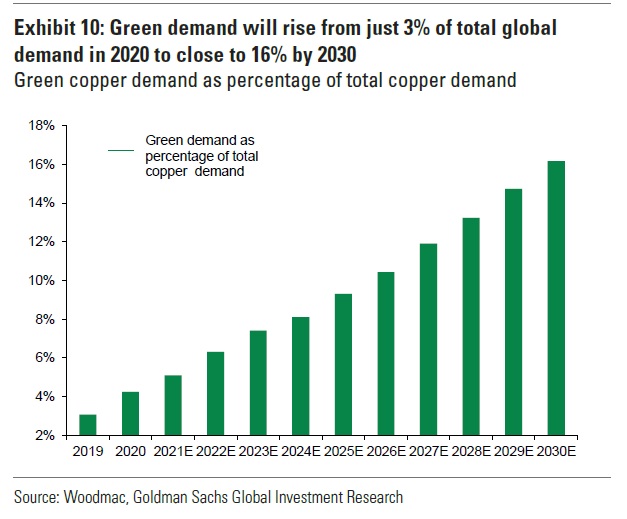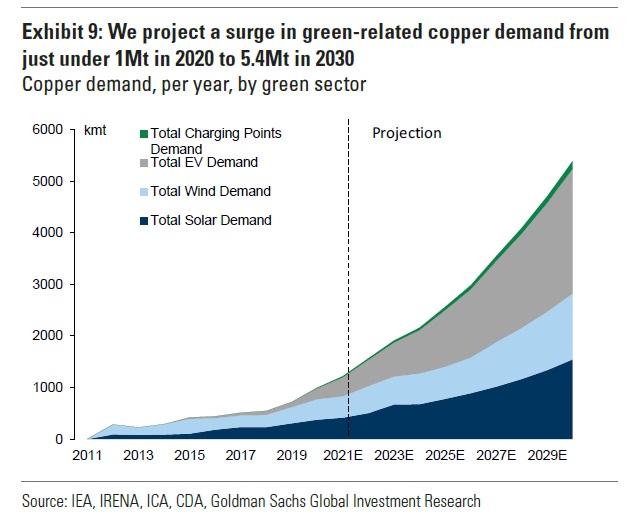Goldman Sachs: “Green” copper accounted for 3 percent of copper consumption in 2020
A recent analysis entitled “Copper is the New Oil,” by Goldman Sachs concludes that 1 million metric tons, or 3 percent, of global copper consumption in 2020 was so-called “green” copper, which the company defined as copper used in wind turbines, solar panels, and electric cars.
This total is expected to increase quickly, according to the analysis, with “green” copper constituting 16 percent of the global market by 2030, as you can see in the chart below.

The analysis also estimates how much metal will be used for wind turbines, solar panels, and electric cars, and electric car charging stations. By 2029, solar panels are expected to consume more than 1 million metric tons of copper annually, wind turbines will consume about 1 million metric tons, and electric vehicle demand will account for more than 2 million metric tons.

Electric vehicles are estimated to consume a large share of the “green” copper market because electric vehicles use five times more copper than internal combutions engine vehicles.

Government mandates for wind turbines, solar panels, and electric cars could effectively sextuple the demand for copper in these technologies, but policymakers don’t seem to appreciate how massive a challenge mining the metal will be.
Indeed, liberal legislators want to simultaneously force Minnesotans to implement the Green New Deal, while also prohibiting the responsible development of Minnesota’s massive copper deposits. They do not seem to appreciate the fact that their preferred energy policies would necessitate a lot of mining.
For the record, this author is deeply skeptical that the predictions in the Goldman Sachs report because wind turbines and solar panels are uniquely bad ways of generating electricity, and this fact is becoming more obvious every day. These inferior technologies will likely be discarded in favor of more reliable electricity sources in the future.
On the other hand, the market can stay irrational longer than you can remain solvent, so time will tell.